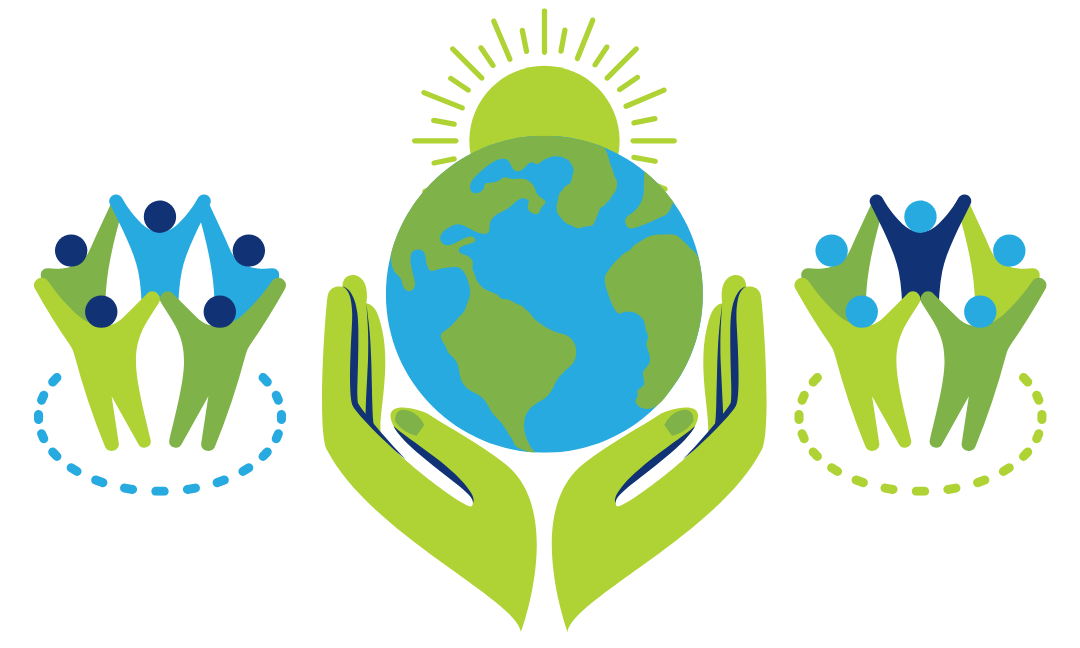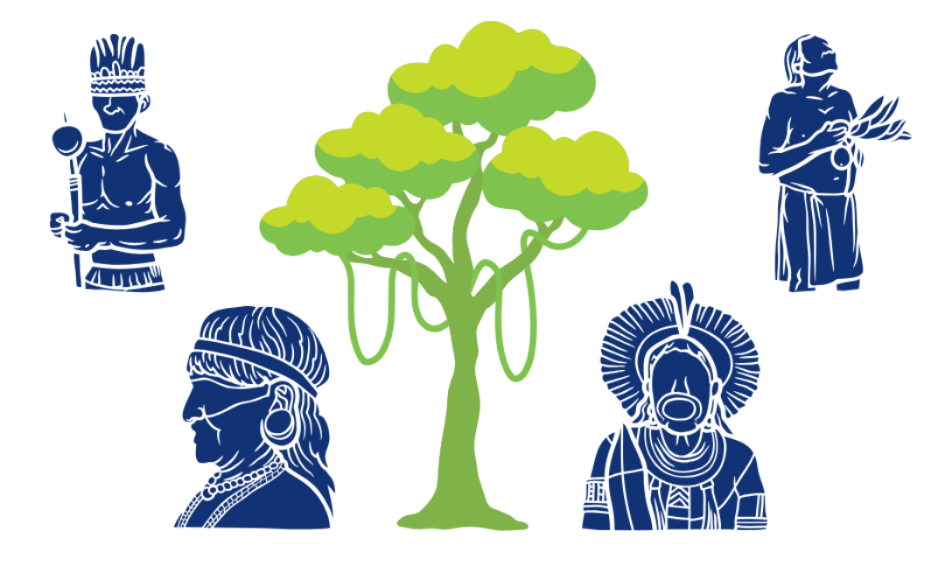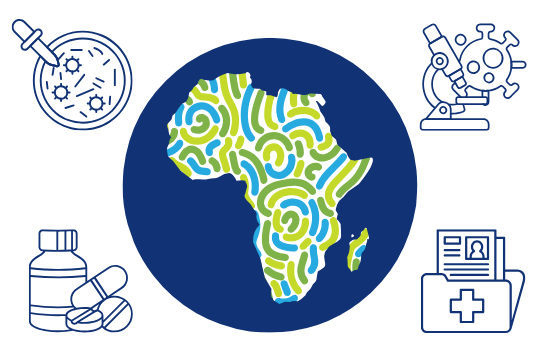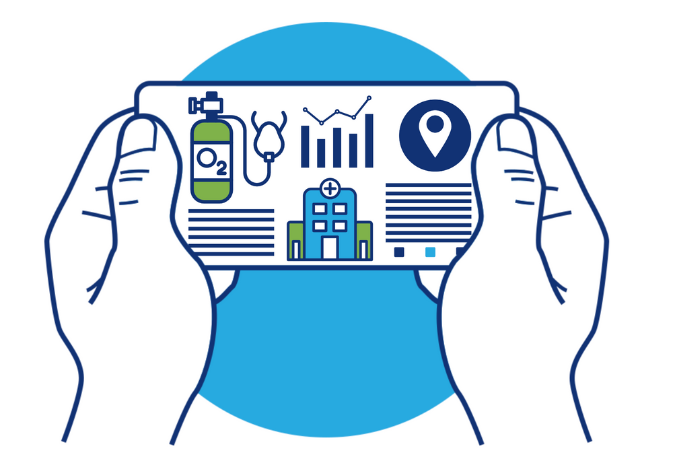
The second wave of the COVID-19 pandemic was especially bad in India. Patients filled hospitals as the Delta variant swept the country in April of 2021. As many as 2,000 people died every day.
Many died literally gasping for air. Although India is a major producer of medical oxygen, supplies ran out amid the unprecedented demand. And while some areas of the vast country had access to medical oxygen, there was no good system for transferring them to places with more need.
It was a horrifying disaster as people who might otherwise have survived succumbed to COVID-19 or other conditions for lack of medical oxygen.
India wasn’t the only country with this type of crisis. Oxygen became a black market item in Peru; supplies were rationed in the UK; and patients lined up to fill empty oxygen cylinders in countries around the world, including Brazil, Somalia, and Indonesia.
It should never happen again, says Varun Manhas, Associate Director of Public Health Programs for the One Health Trust. Varun is working to build a national oxygen grid for India and then share the blueprints with the world.
The National Medical Oxygen Grid isn’t what would come to mind for many. It’s a cellphone-based app to help hospitals and health officials keep track of where medical oxygen is needed and where supplies are plentiful. The app could be used to make sure no one runs out of oxygen in future crises.
You can hear more about the Global need for medical oxygen in this earlier episode of One World, One Health.
Maggie Fox 00:00
Hello and welcome to One World, One Health where we take a look at some of the biggest problems facing our world. I’m Maggie Fox. This podcast is brought to you by the One Health Trust with bite-sized insights into ways to help address challenges, such as infectious diseases, climate change, and pollution. We take a One Health approach that recognizes that everything on this planet — the animals, plants and people, and the climate and environment — are all linked.
When you’re sick, before you need medicine, before you need surgery, before you need anything else at all, you need to breathe! The brain (cells) starts to die within minutes without oxygen. Oxygen is medicine for people undergoing surgery for premature babies. And most of all, for people struggling with pneumonia from infectious diseases such as COVID. People around the world suffered from oxygen shortages as COVID sent tens of thousands to hospitals, all at the same time. Hospitals not only lacked ventilators to help the sickest people breathe, but they also ran out of oxygen. This was especially bad in India, which produces oxygen for medical and industrial uses. But the oxygen wasn’t always in the places where it was needed. The One Health Trust is working to build a National Medical Oxygen Grid (NMOG), so this can’t happen again.
In this episode, we’re chatting with Varun Manhas, associate director of public health programs for the One Health Trust. He’s leading this project. A lot of the problems all boil down to logistics. The solution,you might not believe this, but it’s a phone app!
Varun, thank you so much for joining us.
Varun Manhas 01:55
Thank you for having me, Maggie.
Maggie Fox 01:58
Varun, can you tell us a little bit first about medical oxygen, when, and how it needs to be used?
Varun Manhas 02:03
So, oxygen therapy basically is required whenever someone is going through respiratory distress. And it can happen because of the clinical condition you’re going through. You can have pneumonia, you can have chronic obstructive pulmonary disorder (COPD), you can have asthma, you can actually be a newborn child, or you can be a new mother who’s just delivered. And you could be going through a heart attack episode as well. You may be sort of asthmatic from birth. So, these are the common conditions where oxygen therapy is required.
Maggie Fox 02:30
So medical oxygen is needed in a lot of different circumstances. What do you mean when you talk about an oxygen grid?
Varun Manhas 02:37
National Medical Oxygen Grid is basically managing your supply and demand and understanding the utilization of your assets, also understanding their functional status, whether they’re broken. And the second thing is it also helps you predict your future demand of oxygen, and it could be disease specific demand of oxygen as well.
Maggie Fox 02:54
The idea for this National Medical Oxygen Grid for India came out of a really scary crisis during COVID. Can you tell us a little bit about what happened?
Varun Manhas 03:06
So pre-COVID, the demand for medical oxygen in India was about 700 metric tons per day. So, if I can convert that into cylinders, about 70,000 cylinders per day, whereas the manufacturing capacity was about 10,000 metric tons per day, or the capacity that is available for medical use, but in the first wave, which was during September 2020, the demand went up by four times to about 3200 metric tons per day.
So, we did alright at the first wave, but in the second wave, which (occurred) during the last week of April 2021 to the first week of May 2021, the demand further increased to about 12,000 metric tons per day. And that is where we started struggling with the supply. Twelve thousand metric tons per day means it’s basically about 1.2 million cylinders per day. There was a problem of manufacturing, we had manufacturing plants, but they were not evenly distributed in the country. Then we had problem of transport, we did not have enough tankers to move the oxygen around. Then we had problem of storage at hospital sites because not many hospitals had LMO (Liquid Medical Oxygen) tanks to store oxygen. And finally, there were issues related to black marketing and pricing of oxygen.
Maggie Fox 04:03
What was going on in the hospitals when people were lacking this oxygen? What did it look like?
Varun Manhas 04:08
I think it was a very difficult situation to be in. And a lot of people got cheated as well because there were people selling concentrators selling cylinders, and selling empty cylinders saying that there is oxygen inside. There was shortage of beds in the hospitals as well. And even though the government of India did develop a lot of portals and platforms for people, to check in their vicinity, which hospital has available beds so that people don’t waste time finding beds. But then imagine handling a population of about 1.4 billion people. There was a lot, I think, that was related to shortage of medical oxygen.
Maggie Fox 04:41
Varun, what was your role during this time? You, of course, lived through the pandemic yourself as a person, but you were also involved in this industry. What was going on for you?
Varun Manhas 04:51
I was working in the oxygen control room in one of the state governments and I remember that we had people around the clock sitting on telephone lines and taking calls from hospital managers, private hospital owners, and also patients asking us for more oxygen and information about where oxygen was available and where the beds were available. And those two weeks, as I mentioned, April last week, 2021 and May first week 2021, I think those are the times that nobody wants to go through again. And I cannot justify in words or express myself in words the kind of situation that people were in during those times.
There was a private hospital owner who called, and I think his actual capacity of ICU beds was around 40, but then just because the demand was so high, and people were so critically ill, he enhanced it to about 150 ICU beds. Imagine you have to give about 15 litres per minute (lpm) flow rate per bed. So, each ICU bed consumes about four to six cylinders per day. And with 150 ICU that’s about 600 to 800 cylinders. And he actually called us in such a desperate situation where he said, “I only have about 40 cylinders, whereas I need 300 to 400 cylinders in the next three to four hours, otherwise, you know, many people will be losing their lives.” I am not sure if he followed up on that, because he did not have oxygen being delivered. I don’t know what went on, so it’s pretty sad.
Maggie Fox 06:08
We know from the pandemic how important it is for health systems to work right when we need them. Communication is key. Does this app help hospitals do that?
Varun Manhas 06:21
So, to truly make it as a grid, we need to understand the consumption patterns or the availability of oxygen sources in the nearby hospitals. Let’s say I’m hospital A, and I see that within a couple of days, my oxygen supplies are going to be exhausted. But then the portal will also give me access to the nearest facilities around me, the facilities that will have available oxygen for sharing, and it will only show those facilities whose seven-day demand is already being met. Similarly, this is for oxygen. But it may happen that the facility may be running out of beds as well, it will also show you the bed availability in those nearby facilities. So, you can redirect patients from your hospital to the other hospital because you know, they’ll definitely find a bed there. And then you can also request movable assets of oxygen, which are basically gases cylinders, and concentrators.
Maggie Fox 07:05
So, this allows one hospital to communicate with another to share resources.
Varun Manhas 07:12
Absolutely! For pandemic preparedness, for example, it helps in the planning. Based on the beds you have in your hospital, you can estimate what your daily demand will be like, and that’s based on your bed and bed occupancy. But then during the pandemic, you can understand your bed occupancy will probably grow almost close to hundred percent or it might be doubled, because you may increase the number of beds. So, the tool will actually be able to tell you what based on your bed occupancy what your demand could be. And based on that, you can sort of diversify your options. And then based on your bed occupancy as well as we do not know what the disease specific demand of oxygen is, as of now. But through this portal, we are going to be collecting data over months and years. And then based on that we can understand what is the average flow rate that is given to a patient suffering from pneumonia? What is the average flow rate that is given to a patient suffering from asthma? So based on that, you can also understand what the disease specific amount of oxygen.
Maggie Fox 08:01
So, this app does the math for the hospital administrators as well.
Varun Manhas 08:06
Based on your bed occupancy, we will estimate what your consumption for that day should be. And then if you are already reporting on your assets, utilization and consumption, then we will calculate the difference. And it will tell you what’s the difference. If the difference is greater than 50 percent, it will tell you that the hospital has to conduct an audit, there is a leakage in the medical gas pipeline system. That’s why you’re using too much oxygen, or the nurses are not familiar with the flow rates that must be used with specific delivery devices, or you are using too much oxygen. And the issue is not only about overuse of oxygen, it could be also about underuse of oxygen, if your utilization is 50 percent lower than estimated. That’s also a problem mainly that you’re not giving adequate oxygen therapy. So, in the hospital, I think it’s a game changer.
So, while we were developing this, we did a lot of research on existing data systems. And mind you in India, the government of India developed three different systems. And we observed that there were a lot of limitations in those. Of course, during the pandemic, they helped a lot in decision making. But then with hindsight, we thought why not develop something even better? And we came across a lot of limitations, such as they were not integrated with each other, some of the platforms were only capturing some assets, and they did not have a phone app.
In our system, we have a phone app, and you can enter the data in offline mode as well. So, let’s say if you want to use a system in a rural setting, and maybe there is a power cut, or you do not have you know data available for data transfer, you can do the data entry to begin with an offline mode. And then once you have access to data, it can be uploaded to the main server. And one important feature that we developed– imagine a very large hospital, which has about 4500 beds. So, in the previous platforms, we observed, there was only one person who could enter the data. So that person had to make sure he collects all the data, validates it, and then submits it. But we’ve created this concept of master and satellite user. So, there is one master within a facility who will sort of monitor data that has been collected and he’ll be the file authority who submitted the data to main server, but then he can also create multiple satellite operators and we have not set any limit on it. So, you can give a task to one particular asset or one particular bed type to one person, and you’re reducing the data entry burden for that person. And with that, you’re also ensuring the accuracy of the data. Also, we put in lot of checks as well, if at all, we feel, the system feels that the data that has been entered is incorrect, it will give a warning and cannot accept the data for submission. So, with these sorts of features, I’d say we haven’t come across (before). And we presented the same thing to the World Health Organization (WHO), and they really appreciated our efforts and because of that, we’ve been invited to present the same portal in a meeting that is happening in a couple of weeks from now in Senegal, which is National Oxygen Scale-Up Framework Meeting: Road to Oxygen Access.
Maggie Fox 10:34
If there had been a grid like this in place before COVID, would lives have been saved?
Varun Manhas 10:40
Absolutely. Because there would have been planning, right? And believe me, even today, if you go back to the state governments and ask them, “Could you please declare the number of assets you have?”, believe me, not many would be able to answer this question. And this is post-pandemic.
So, if we had NMOG pre-pandemic, we would get real-time information on all the assets available, we would have functional status. So, the huge challenge would have been with the data entry, as I said, one person is expected to enter data for the entire hospital, and with a large hospital (data) that would be challenging. So, with the concept of having these mass data entry operators, you know, negate that sort of challenge completely. And with the feedback that we received from seventy-odd hospitals that we’ve implemented this grid so far; they’re saying this is the best system they have ever come across. And I think maybe this concept of satellite master would be sort of, you know, taken up in other health portions because you can’t expect one person to collect the data, and then validate the data. And then it will definitely help in ensuring the density of the population in which they should have a number of beds because as of now, it will be a great trouble for them to quantify the number of beds in each district as well. So, we are capturing that information when possible. And also, it will help in (making) optimal, procurement decisions, for example, you have district A that has lots of cylinders, but their historic demand and the current demand is very low. But then you suddenly see district B, which has a surge. So should district B procure new cylinders, or new assets, or should they request district A to share these assets with them, it will at least give data to the decision makers so that they can make decisions on how they want to distribute oxygen sources, it would be data-based decision making, rather than you know, based on anecdotes, and just assumptions, which are not concrete.
So, by default, let’s say, if you’re using this portal in one of the states, the hospital does not have the flexibility to say that we do not want to share data with the administrators, it’s by default, the data would be shared. And there’s no way that they can prevent that from happening. And the state will make it a policy in their state to say that this portal has to be utilized on a daily basis, data has to be entered on daily basis There is another important feature on the portal called ‘portal update.’ So, when you click on that feature in the portal, automatically it will generate a list of hospitals who have not entered data for that particular day. And immediately, the government can take action, start calling them up, and start telling them that there will be strict action against them if they do not start utilizing the portal.
Maggie Fox 13:04
So, who’s paying for all this?
Varun Manhas 13:05
So, the initial support has to come from nonprofits, where we generate evidence through piloting or implementation in small geography. Then based on that, we actually try and convince the government that they have to take ownership because the majority of the cost is basically in developing such systems. And we’ve already spent that money and we were generously funded by the Bill & Melinda Gates Foundation for that.
Now, it’s basically (just) taking ownership of the platform. So, it’s not going to cost the government a lot of money to take ownership. So, they will have to host this platform on their own servers, we are happy to train their engineers as well on managing the portal. So, the cost could be, if it’s a very minimal cost, I think the minimum cost would be around $500 per year. And the maximum could be about, let’s say, around $4,000 per year. So that’s the cost the government has to bear for continued implementation in the state.
Maggie Fox 13:50
$500 total?
Varun Manhas 13:53
Now, because the thing is, before we hand it over to the government, we fix all the bugs, there are no technical issues. And we’re not expecting any major upgrades in the system in coming years. So, if at all, we hand over the portal as it is, the only cost for them is, they need to pay for the web domain name that is going to be used for hosting the platform on the portal. Then also, they’ll have to pay one time cost to Google to host Android App on Google Play, which is about $25. And then the show cost about $99 to host the app on Apple App Store, and then some additional cost for getting the security certificate. So, it totals to around $500 per year.
Maggie Fox 14:25
So, the One Health Trust with funding from the Gates Foundation is doing all the hard work when the government assumes this, they’re basically just assuming the very minimum care it takes for an app.
Varun Manhas 14:38
Yeah, absolutely. So, we’ve done the bulk of research, we’ve done a lot of field work to understand the oxygen ecosystem in the country. So, a lot of time has gone into designing and then development. And of course, once you go through implementation, most of the cost will also be on capacity building.
Maggie Fox 14:53
So, this would be really easy to translate to other countries. All they have to do is get this app that does all the work for them. And you can run a national oxygen grid off a smartphone. Is that what you’re really saying?
Varun Manhas 15:07
Absolutely. So yeah, it’s easy to scale up to any other countries or expand to other geographies. One major thing we’ll have to be concerned about is the translation costs, then the second costs would be because we use specific terminologies or nomenclature for ourselves in India. We’ll have to tailor those names to be relevant to the local geographies. So, within two to four weeks of the governments of these countries showing interest, we can make these changes quickly.
Maggie Fox 15:30
Varun, thank you so much for joining us.
Varun Manhas 15:33
Thank you for having me. It was lovely chatting with you.
Maggie Fox 15:37
Listeners, if you enjoyed this podcast, please share it. You can learn more about this podcast and other important topics at one health trust.org. And let us know what else you’d like to hear about at [email protected]. Thanks for joining us.
Guest
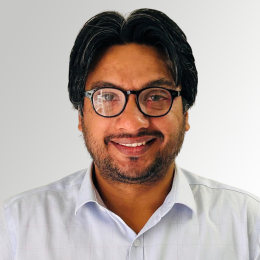
Dr. Varun Manhas is the Associate Director of Public Health Programs based in Bangalore, India. At the One Health Trust, Dr. Manhas is leading the implementation of the National Medical Oxygen Grid Project in Uttar Pradesh along with contributing to other public health programs such as Reproductive, Maternal, Newborn, Child Health (RMNCH), and antimicrobial resistance (AMR).
Dr. Manhas has previously worked at PATH and Clinton Health Access Initiative (CHAI) in India. AT PATH, he was part of the Primary Health Care (PHC), the Respiratory Care and the Integrated Public Health Laboratory (IPHL) portfolio.
He has a BE in Biomedical Engineering from BVP Pune India; an MSc in Biomedical Engineering from Oxford University, UK; an MPhil in Biotechnology from Cambridge University, UK and a PhD in Bio-Mechanical Engineering from KU Leuven, Belgium.
Credits
Hosted and written by Maggie Fox
Special guest: Varun Manhas
Produced and edited by Samantha Serrano
Music composed and sound edited by Raquel Krügel
Transcript edited by Namitha Prabhu



